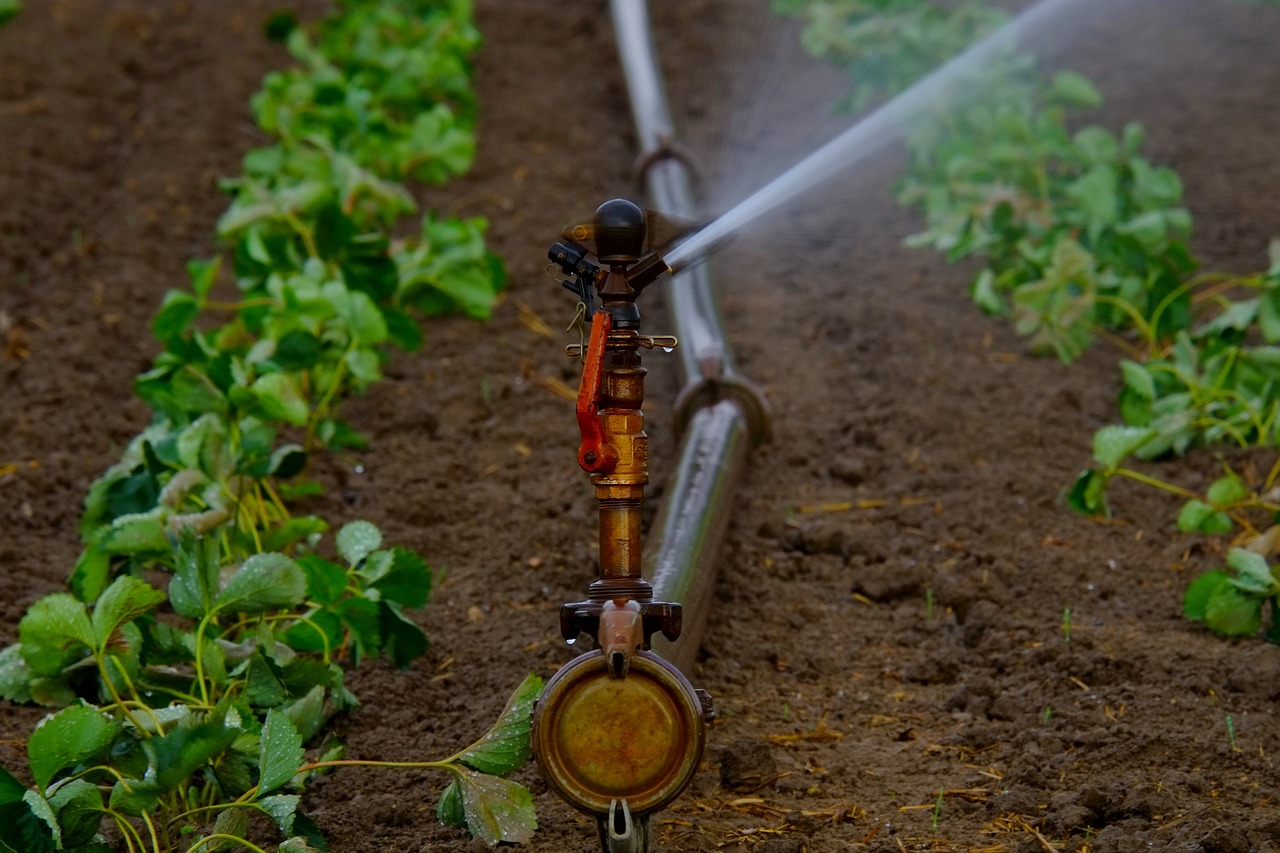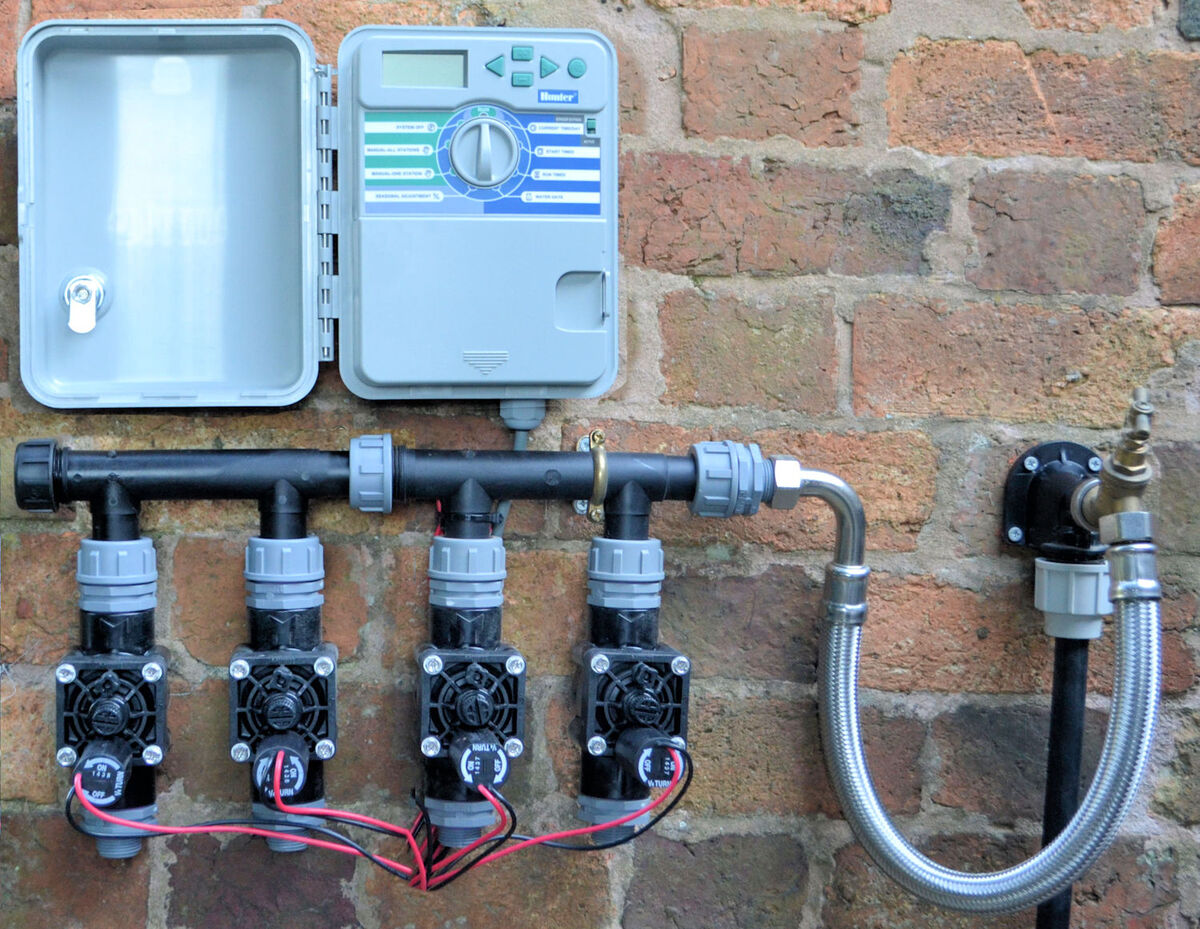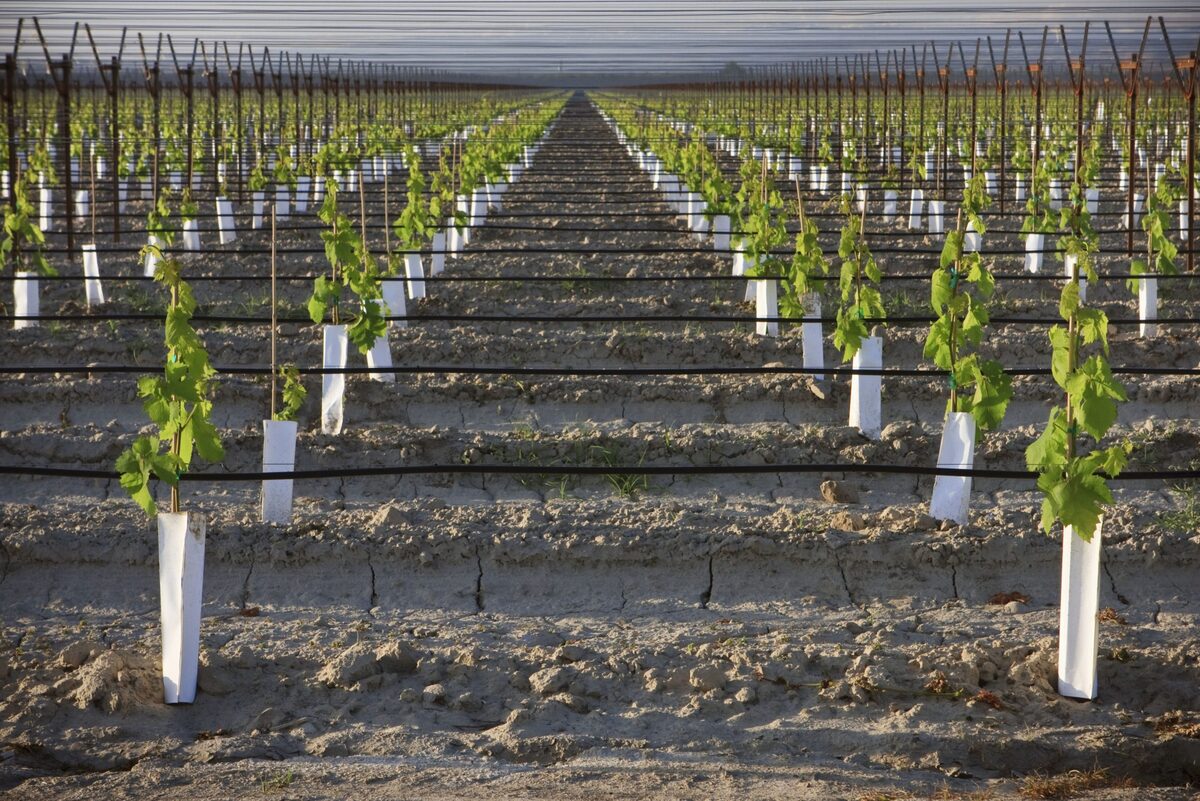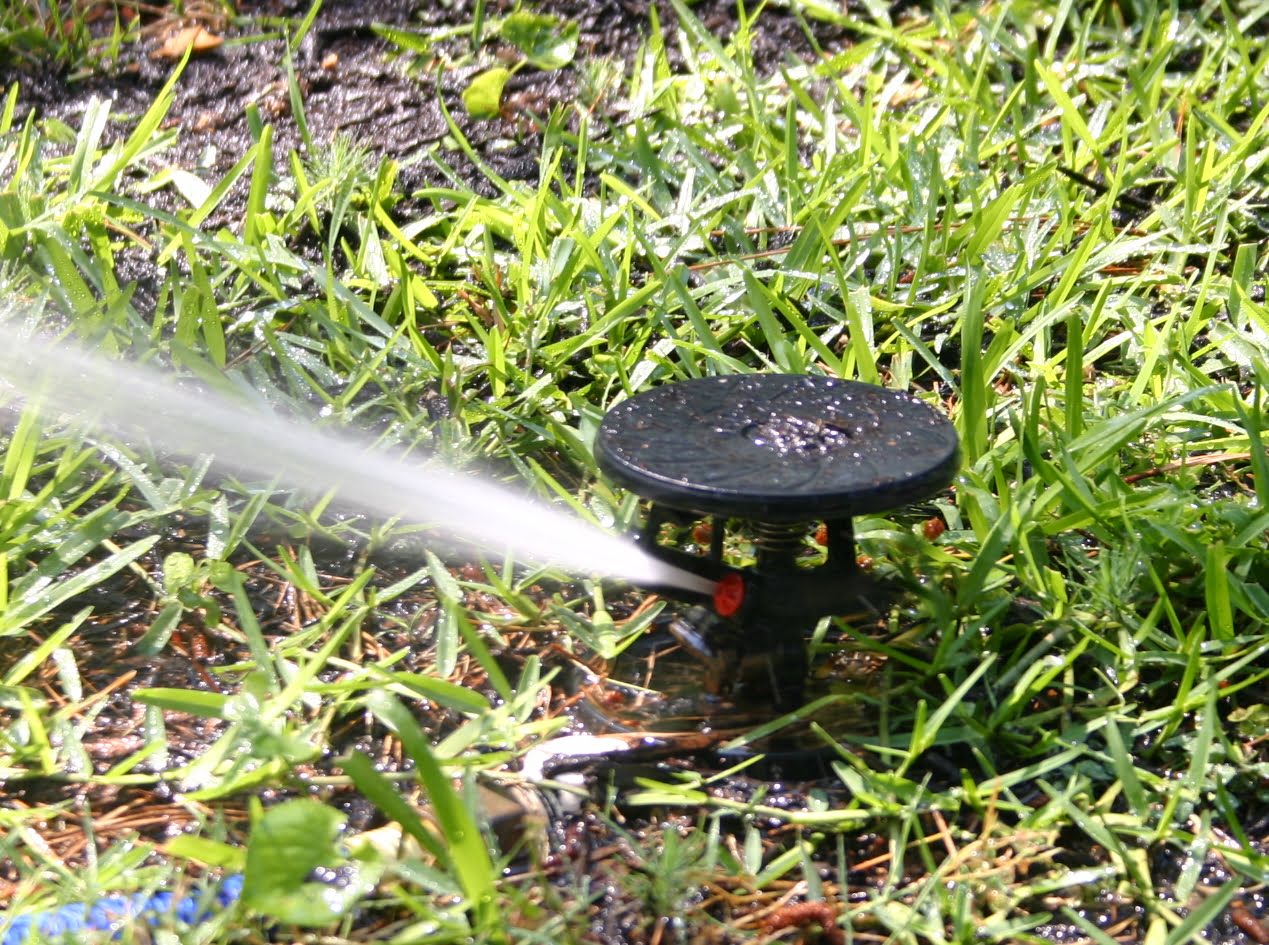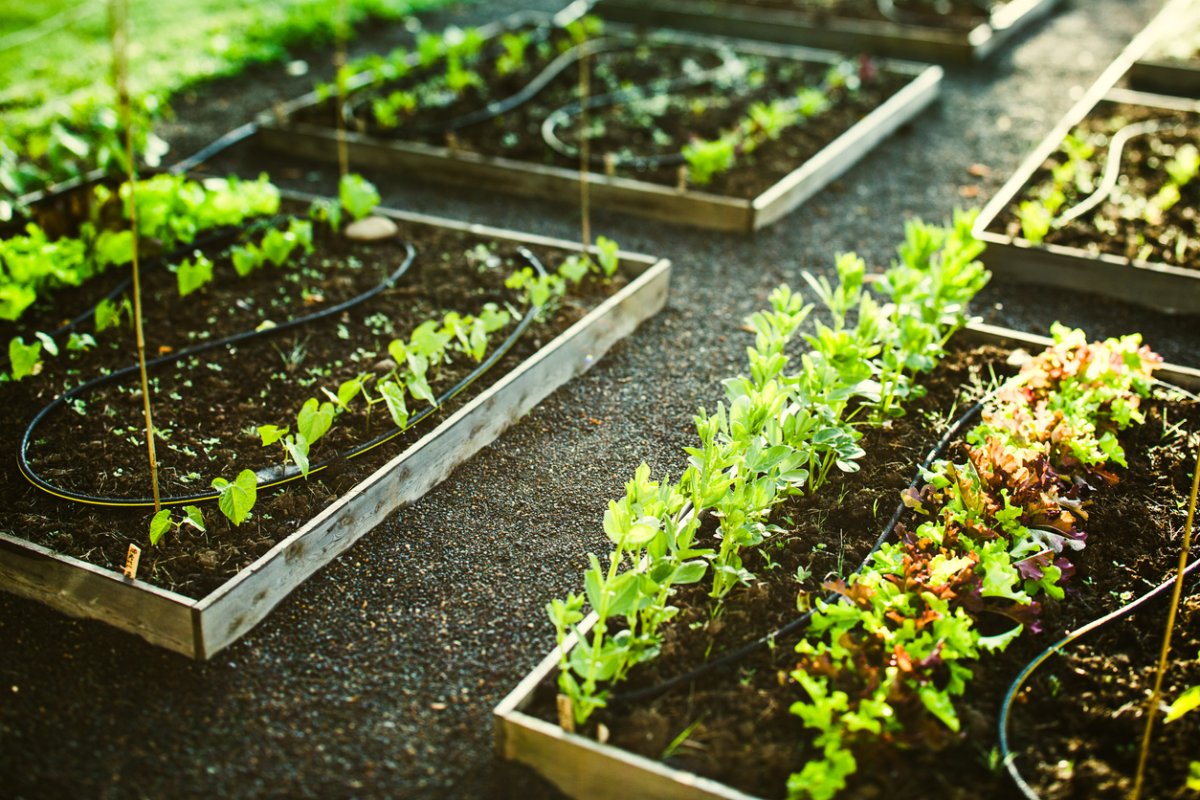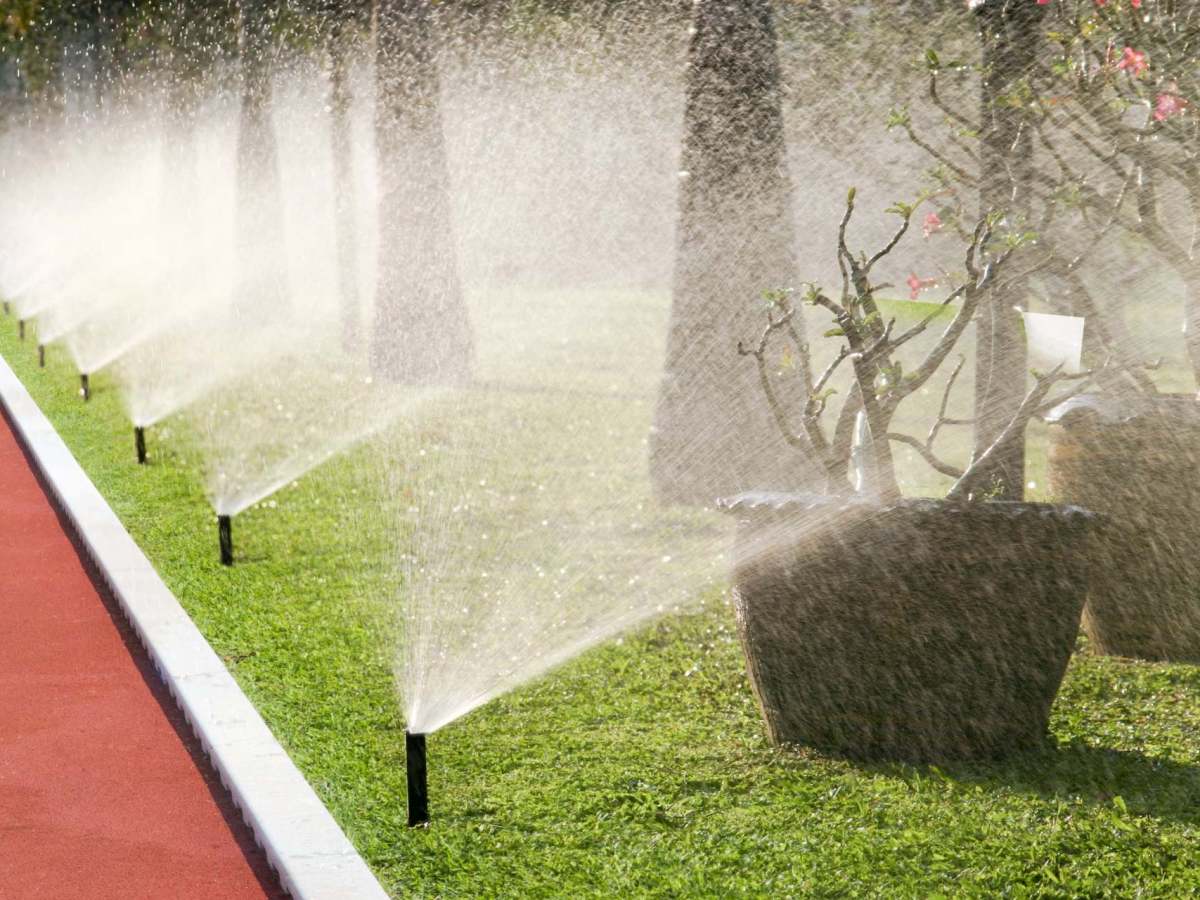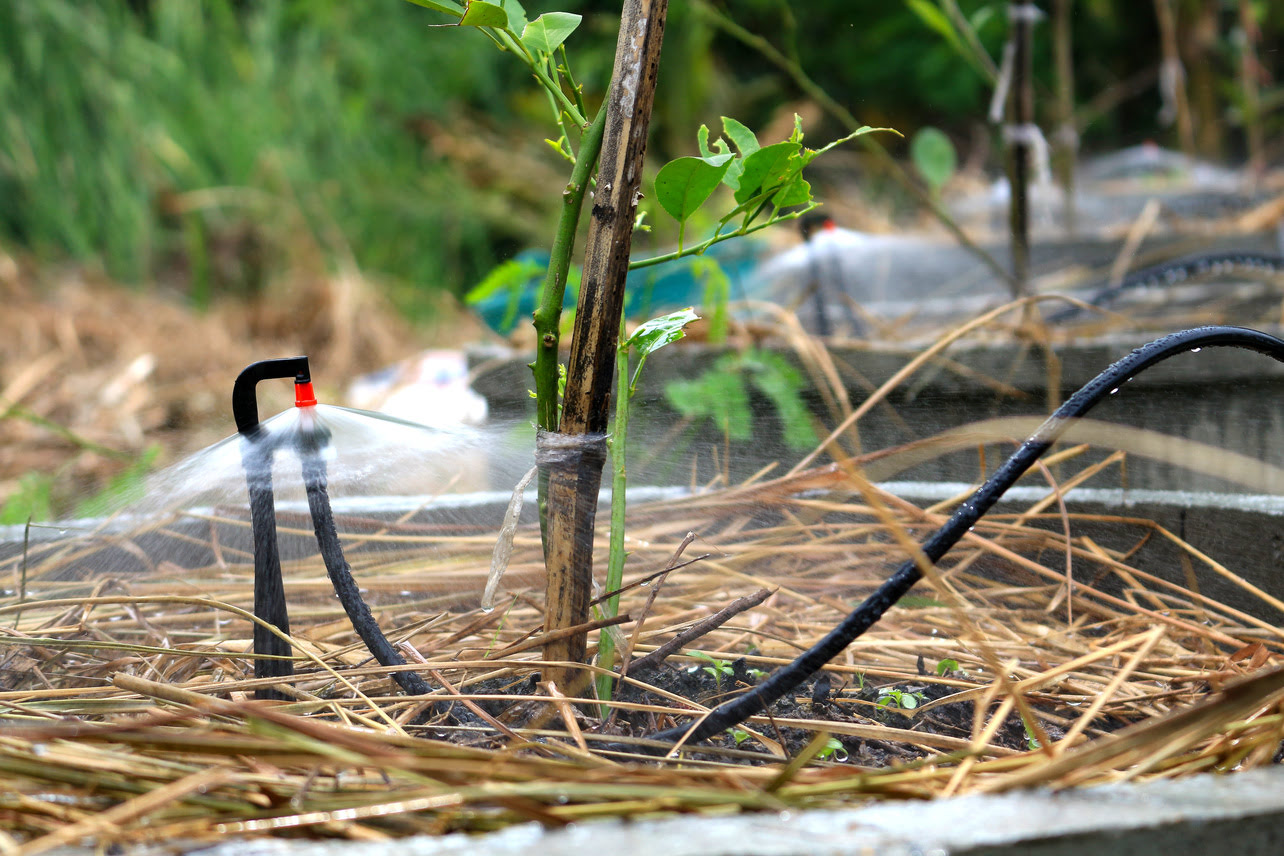Home>Gardening News and Trends>Which Type Of Fertilizer Is Commonly Incorporated Into Irrigation Systems?
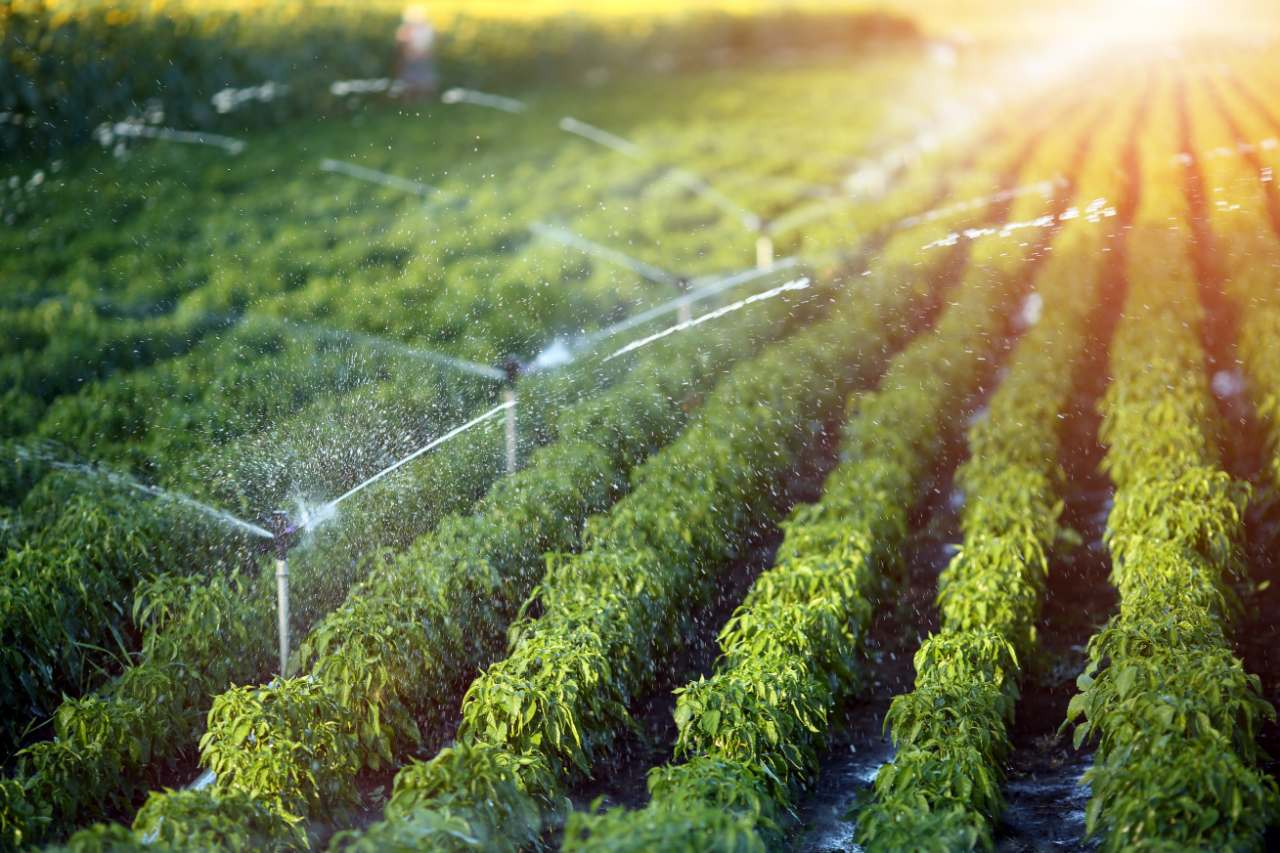

Gardening News and Trends
Which Type Of Fertilizer Is Commonly Incorporated Into Irrigation Systems?
Modified: January 22, 2024
Discover the latest news on the type of fertilizer commonly used in irrigation systems. Find out which one is most effective for your plants and how it can improve water efficiency.
(Many of the links in this article redirect to a specific reviewed product. Your purchase of these products through affiliate links helps to generate commission for Chicagolandgardening.com, at no extra cost. Learn more)
Table of Contents
- Introduction
- Benefits of Incorporating Fertilizer into Irrigation Systems
- Factors to Consider when Choosing Fertilizer for Irrigation Systems
- Types of Fertilizers Commonly Incorporated into Irrigation Systems
- Liquid Fertilizers
- Granular Fertilizers
- Soluble Fertilizers
- Factors to Consider when Selecting the Type of Fertilizer for Irrigation Systems
- Crop Nutrient Requirements
- Soil Nutrient Levels
- Irrigation System Type
- Water Quality
- How to Incorporate Fertilizer into Irrigation Systems
- Injection Method
- Feeder Tanks
- Fertigation Controllers
- Challenges and Considerations when Incorporating Fertilizer into Irrigation Systems
- Conclusion
Introduction
Welcome to the world of irrigation systems, where water and nutrients come together to nourish plants and maximize their growth potential. When it comes to promoting healthy plant growth, it’s not just about providing water. Nutrients play a vital role in ensuring that plants receive the necessary elements for their development. That’s where fertilizer comes into play.
Incorporating fertilizer into irrigation systems has become a popular method for delivering essential nutrients directly to plants’ roots. By combining the benefits of irrigation and fertilizer, this approach offers numerous advantages over traditional fertilization methods.
This article will explore the benefits of incorporating fertilizer into irrigation systems, discuss the various types of fertilizers commonly used, and provide insights on how to choose the right fertilizer for your specific needs. Additionally, we will delve into the different methods of incorporating fertilizer into irrigation systems and address the challenges and considerations that come along with this practice.
Whether you’re a farmer looking to enhance your crop’s yield or a landscape gardener seeking to maintain vibrant and healthy plants, understanding the ins and outs of incorporating fertilizer into irrigation systems is key to achieving your goals. So, let’s dive in and explore this exciting world that combines water, nutrients, and the art of cultivation.
Benefits of Incorporating Fertilizer into Irrigation Systems
The practice of incorporating fertilizer into irrigation systems offers a range of benefits that contribute to the overall health and productivity of plants. Let’s explore some of the key advantages:
- Efficient Nutrient Delivery: Incorporating fertilizer into irrigation systems allows for precise and targeted nutrient delivery directly to the root zone of plants. This ensures that the nutrients are efficiently absorbed and utilized, minimizing wastage and maximizing their benefits.
- Improved Nutrient Uptake: When fertilizer is applied through irrigation, plants have greater access to essential nutrients as they are distributed evenly across the root zone. This promotes healthier root development and encourages optimal nutrient uptake, leading to improved plant growth, vigor, and yield.
- Time and Labor Savings: Incorporating fertilizer into irrigation systems can save significant time and labor compared to traditional fertilization methods. Instead of applying fertilizer manually, which can be time-consuming and physically demanding, the automated nature of irrigation systems allows for convenient and efficient nutrient delivery.
- Enhanced Water Efficiency: By incorporating fertilizer into the irrigation system, you can achieve a dual-purpose application, delivering both water and nutrients simultaneously. This not only saves water but also reduces nutrient leaching, as the nutrients are directly applied to the root zone instead of being scattered across the soil surface.
- Consistent Nutrient Supply: Fertilizer incorporation into irrigation systems provides a consistent and regulated supply of nutrients throughout the growing season. This ensures that plants receive a continuous nourishment, avoiding nutrient deficiencies or excesses that can negatively impact plant health and productivity.
- Increased Flexibility: Incorporating fertilizer into irrigation systems allows for flexibility in adjusting nutrient application rates and timing to match the specific needs of different plants or crops. This adaptability is particularly beneficial in situations where nutrient requirements vary within a field or garden.
Incorporating fertilizer into irrigation systems offers a host of benefits that optimize nutrient delivery, improve plant growth, and save time and resources. This approach provides a more efficient and effective means of nourishing plants, leading to healthier, more vibrant, and higher-yielding crops or gardens.
Factors to Consider when Choosing Fertilizer for Irrigation Systems
Choosing the right fertilizer for your irrigation system is crucial to ensure optimal plant nutrition and growth. Here are several factors to consider when making this decision:
- Crop Nutrient Requirements: Different plants have varied nutrient needs. Understanding the specific nutrient requirements of your crops is essential when selecting a fertilizer. Consider factors such as nitrogen, phosphorus, potassium, and micronutrient ratios that best meet your plants’ needs for healthy growth and development.
- Soil Nutrient Levels: Assessing the nutrient levels in your soil is crucial for determining which nutrients may be lacking or excessive. Conducting a soil test can provide insights into the existing nutrient composition, allowing you to choose a fertilizer that addresses any deficiencies and maintains the nutrient balance.
- Irrigation System Type: The type of irrigation system you use can influence your choice of fertilizer. Different systems, such as drip irrigation, sprinkler systems, or pivot systems, may require specific forms or formulations of fertilizer for optimal application and compatibility.
- Water Quality: The quality of your irrigation water can affect the selection of fertilizer. Water sources with high mineral content or alkalinity may require adjustments in fertilizer choice to prevent nutrient imbalances or reactions that limit nutrient availability.
By considering these factors, you can make an informed decision about the best fertilizer for your irrigation system. Ensuring that the fertilizer aligns with your crop’s nutrient needs, accounts for soil nutrient levels, is compatible with your irrigation system, and is suitable for your water quality will help you achieve optimal results in plant growth and productivity.
Types of Fertilizers Commonly Incorporated into Irrigation Systems
Several types of fertilizers are commonly used to incorporate nutrients into irrigation systems. Let’s explore three popular types:
- Liquid Fertilizers: Liquid fertilizers are highly soluble and easily mix with water, making them ideal for irrigation systems. They are available in various formulations and contain nutrients in a dissolved form that can be readily absorbed by plants. Liquid fertilizers are commonly used in fertigation, where they are injected into the irrigation water and distributed directly to the plants’ root zone.
- Granular Fertilizers: Granular fertilizers consist of small solid granules that contain the desired nutrients. These granules are spread on the soil surface or incorporated into the soil and delivered to the plants through irrigation. When they come into contact with water, the granules gradually release the nutrients, providing a slow and continuous supply. Granular fertilizers are often used in combination with irrigation systems to deliver nutrients over an extended period.
- Soluble Fertilizers: Soluble fertilizers, as the name suggests, dissolve easily in water. They are available in a powdered or crystalline form that quickly dissolves when mixed with water. Soluble fertilizers are commonly used in greenhouse and hydroponic systems, where they are mixed with water in a concentrated solution and delivered directly to the plants’ root systems.
Each type of fertilizer has its own advantages and considerations. Liquid fertilizers offer immediate nutrient availability, while granular fertilizers provide a slower release over time. Soluble fertilizers are popular in controlled environments where precise nutrient control is required. The choice of fertilizer type depends on factors such as crop needs, application method, and desired nutrient release characteristics.
It’s important to note that some fertilizers may require additional equipment or modifications to your irrigation system to ensure proper application and distribution. Consulting with agricultural experts or irrigation professionals can help you determine the most suitable type of fertilizer for your specific needs.
Liquid Fertilizers
Liquid fertilizers are a popular choice for incorporating nutrients into irrigation systems due to their high solubility and easy application. They offer several advantages that make them a preferred option for many growers. Let’s explore some key aspects of liquid fertilizers:
Immediate Nutrient Availability: Liquid fertilizers contain nutrients in a dissolved form, allowing plants to quickly absorb them through their root systems. This immediate availability ensures rapid nutrient uptake, promoting rapid growth and development.
Precise and Controlled Application: Liquid fertilizers can be injected directly into irrigation systems, allowing for precise and controlled application. This enables growers to accurately deliver the required nutrients based on crop needs and soil conditions.
Versatility in Application Methods: Liquid fertilizers can be applied through various irrigation systems, including drip irrigation, sprinkler systems, and fertigation systems. This versatility allows growers to use liquid fertilizers regardless of their preferred irrigation method.
Uniform Nutrient Distribution: When liquid fertilizers are injected into irrigation systems, they mix thoroughly with water, ensuring uniform distribution of nutrients across the field or garden. This helps minimize nutrient variability and reduces the risk of nutrient imbalances.
Ability to Supplement Micro-Nutrients: Liquid fertilizers often contain micro-nutrients, such as iron, manganese, zinc, and copper, which are essential for plant growth. These nutrients are typically chelated, which means they remain available to plants even in alkaline soils where micronutrient availability may be limited.
Potential Cost Savings: Liquid fertilizers can be cost-effective when used in conjunction with irrigation systems. Their precise application minimizes fertilizer waste and ensures that nutrients are targeted directly where they are needed, reducing the overall amount of fertilizer required.
It’s important to note that the application rates and frequency of liquid fertilizers should be carefully monitored and adjusted based on crop nutrient needs, soil conditions, and growth stage. Consulting with agricultural experts or fertilizer manufacturers can provide valuable guidance and recommendations specific to your crops and irrigation setup.
Granular Fertilizers
Granular fertilizers are a widely used type of fertilizer that consists of small solid granules containing nutrients. They offer several benefits when incorporated into irrigation systems. Let’s explore some key aspects of granular fertilizers:
Sustained Nutrient Release: Granular fertilizers provide a slow and controlled release of nutrients over time. When applied to the soil or mixed with irrigation water, the granules gradually break down, releasing nutrients at a consistent rate. This sustained release ensures a steady supply of nutrients to plants over an extended period.
Easy Application: Granular fertilizers are simple to apply and are often spread on the soil surface or incorporated into the soil using a mechanical spreader. Once applied, they can be incorporated into the soil using irrigation or natural rainfall, ensuring that the nutrients are readily available to plant roots.
Reduced Risk of Nutrient Loss: Granular fertilizers are less prone to nutrient leaching compared to some other forms of fertilizers. The granules release nutrients in a controlled manner, allowing plants to take up the nutrients before they can be washed away by rainfall or excessive irrigation.
Versatility in Crop Applications: Granular fertilizers can be used for a wide range of crops, including field crops, vegetables, and ornamental plants. They can be customized to meet the specific nutrient requirements of different crops, making them versatile for various agricultural practices.
Long Shelf Life: Granular fertilizers have a longer shelf life compared to liquid fertilizers. They are less prone to degradation or nutrient breakdown over time, ensuring that the fertilizers remain effective and usable for longer periods.
Potential for Blended Formulations: Granular fertilizers offer the flexibility of creating blended formulations that contain different ratios of nutrients. This allows growers to tailor the nutrient composition to match their crop’s specific needs or address nutrient deficiencies identified through soil testing.
It’s important to note that the application of granular fertilizers requires careful consideration of factors such as soil type, irrigation practices, and crop nutrient requirements. Proper timing and incorporation techniques are essential to ensure effective nutrient uptake by the plants. Consulting with agricultural experts or fertilizer manufacturers can provide guidance on the best practices for incorporating granular fertilizers into your irrigation system.
Soluble Fertilizers
Soluble fertilizers are a popular choice for incorporating nutrients into irrigation systems, especially in controlled environments such as greenhouses and hydroponic systems. They offer several advantages that make them suitable for precise and targeted nutrient delivery. Let’s explore some key aspects of soluble fertilizers:
High Solubility: Soluble fertilizers readily dissolve in water, forming a concentrated nutrient solution. This allows for easy and efficient nutrient absorption by plants, ensuring rapid uptake and utilization of essential nutrients.
Precision in Nutrient Control: Soluble fertilizers offer precise control over nutrient concentrations in irrigation solutions. Growers can adjust the nutrient solution’s strength based on specific crop requirements, growth stages, and environmental conditions, ensuring optimal plant nutrition.
Ability to Customize Nutrient Ratios: Soluble fertilizers can be formulated to meet specific nutrient ratios required by different crops. This allows growers to tailor the nutrient composition to address specific deficiencies or growth goals, ensuring plants receive the precise combination of nutrients they need.
Compatibility with Hydroponic Systems: Soluble fertilizers are particularly well-suited for hydroponic systems, where plants are grown without soil. In these systems, the nutrients are dissolved in the water and delivered directly to the plant roots, providing complete control over nutrient supply.
Precise Nutrient Delivery: Soluble fertilizers ensure accurate and uniform nutrient distribution across the root zone, preventing nutrient imbalances or deficiencies. This precision in nutrient delivery minimizes the risk of nutrient wastage and maximizes the plants’ ability to absorb and utilize the provided nutrients effectively.
Immediate Availability: Soluble fertilizers offer immediate nutrient availability to plants, as the dissolved nutrients can be quickly taken up by the roots. This can promote rapid growth, especially during critical growth stages or when addressing nutrient deficiencies.
It’s important to note that the application of soluble fertilizers requires careful monitoring of nutrient solution concentrations, pH levels, and frequency of application. Overfertilization or improper pH levels can lead to nutrient toxicity or imbalances. Proper knowledge and management of soluble fertilizers in irrigation systems can ensure optimal plant performance and the efficient utilization of nutrients.
Factors to Consider when Selecting the Type of Fertilizer for Irrigation Systems
Choosing the right type of fertilizer for your irrigation system is essential to ensure effective nutrient delivery and promote plant health. Several factors should be considered when making this selection:
- Crop Nutrient Requirements: Understanding the specific nutrient needs of your crops is crucial when selecting a fertilizer. Different crops have varying nutrient requirements at different growth stages. Consider the primary macronutrients (nitrogen, phosphorus, and potassium) as well as secondary macronutrients and micronutrients required for optimal growth.
- Soil Nutrient Levels: Conducting a soil test is vital to assess the existing nutrient levels in the soil. This information will help you identify any nutrient deficiencies or imbalances that need to be addressed. Choosing a fertilizer that complements the soil’s nutrient composition will ensure a more balanced and effective nutrient management approach.
- Irrigation System Type: Different types of irrigation systems may have specific requirements when it comes to fertilizer compatibility and application. Consider the characteristics and capabilities of your irrigation system and choose a fertilizer that can be easily integrated into your specific system, such as liquid fertilizers for fertigation or granular fertilizers for surface application.
- Water Quality: The quality of your irrigation water can affect the selection of fertilizer. Water with high alkalinity, salinity, or mineral content may require adjustments in fertilizer choice or additional treatments to prevent nutrient interactions or deficiencies. Consider conducting water quality tests and consult with experts to choose a fertilizer that works well with your specific water conditions.
By considering these factors, you can make an informed decision about the most suitable type of fertilizer for your irrigation system. It’s important to note that consulting with agricultural specialists, extension services, or fertilizer manufacturers can provide valuable advice and guidance tailored to your specific crop, soil, and water conditions.
Crop Nutrient Requirements
Understanding the specific nutrient requirements of your crops is crucial when selecting a fertilizer for your irrigation system. Each crop has unique needs for achieving optimal growth and productivity. Here are some key factors to consider:
Primary Macronutrients: Crops require three primary macronutrients: nitrogen (N), phosphorus (P), and potassium (K). Nitrogen is essential for leaf and stem development, phosphorus promotes root growth and flowering, while potassium supports overall plant health and disease resistance.
Secondary Macronutrients: Secondary macronutrients such as calcium (Ca), magnesium (Mg), and sulfur (S) are also important for crop nutrition. Calcium aids in cell structure and nutrient uptake, magnesium is a crucial component of chlorophyll, and sulfur plays a role in protein synthesis and enzyme activity.
Micronutrients: Micronutrients, although required in smaller amounts, are equally important for plant health. These include iron (Fe), manganese (Mn), zinc (Zn), copper (Cu), boron (B), molybdenum (Mo), and nickel (Ni). Each micronutrient plays a specific role in enzymatic reactions, photosynthesis, or nutrient uptake.
Growth Stage Considerations: Crop nutrient requirements can vary between different growth stages. For example, during the vegetative phase, plants may require higher nitrogen levels to support leaf and stem growth. In the flowering or fruiting stage, increased phosphorus and potassium levels are often necessary for optimal flower and fruit development.
Recommendations and Guidelines: Crop nutrient requirements can be obtained from various sources such as research institutions, agricultural extension services, or crop-specific guidelines. These resources provide valuable information on the recommended nutrient ratios and application rates for different crops, helping you choose a fertilizer that meets your crop’s specific needs.
By considering the unique nutrient requirements of your crops, you can select a fertilizer that provides the necessary elements in the appropriate proportions. This will help ensure that your plants receive the essential nutrients they need to thrive and achieve their maximum potential.
Soil Nutrient Levels
Assessing the nutrient levels in your soil is crucial when selecting a fertilizer for your irrigation system. Understanding the existing soil nutrient composition helps determine which nutrients may be lacking or excessive. Consider the following factors when evaluating soil nutrient levels:
Soil Testing: Conducting a soil test is the most accurate way to assess nutrient levels. Soil samples are analyzed for various nutrients, including macronutrients (nitrogen, phosphorus, potassium) and micronutrients (iron, manganese, zinc, etc.). Soil testing provides valuable insights into nutrient deficiencies or imbalances that need to be addressed.
Nutrient Deficiencies: Soil testing helps identify specific nutrient deficiencies in the soil. For example, if the test indicates low levels of nitrogen, a fertilizer with a higher nitrogen content would be needed to supplement the soil. Addressing these deficiencies ensures that plants have access to the necessary nutrients for healthy growth.
Nutrient Excesses or Imbalances: High levels of certain nutrients can be detrimental to plant growth. For example, excessive phosphorus can interfere with the uptake of other nutrients. Soil testing can reveal such imbalances, enabling you to select a fertilizer formulation that avoids overloading the soil with certain nutrients.
pH Levels: Soil pH affects nutrient availability to plants. Some nutrients are more readily available at specific pH levels. For instance, iron may be less available in alkaline soils. Adjusting soil pH to the appropriate range can maximize nutrient availability and uptake by plants.
Organic Matter Content: Soils rich in organic matter have greater nutrient-holding capacity. Evaluating the organic matter content in your soil can guide fertilizer selection, as organic matter releases nutrients slowly over time. Complementing organic matter with appropriate fertilizers helps maintain nutrient balance and improve soil fertility.
Soil nutrient levels can vary significantly, even within the same field or garden. Regular soil testing, ideally performed before each growing season, provides a comprehensive understanding of the soil’s nutrient status. This information allows you to select a fertilizer that supplements any nutrient deficiencies or imbalances, optimizing plant nutrition and ensuring healthy crop growth.
Irrigation System Type
The type of irrigation system you use plays a crucial role in determining the appropriate fertilizer for your needs. Different irrigation system types have unique characteristics that influence fertilizer compatibility and application methods. Consider the following factors when selecting a fertilizer based on your irrigation system:
Drip Irrigation: Drip irrigation systems deliver water and nutrients directly to the plant’s root zone through a network of tubes and emitters. Fertilizer for drip irrigation should be in a soluble form, allowing it to mix easily with the irrigation water. Liquid fertilizers or water-soluble fertilizers are commonly used in drip irrigation systems for precise nutrient delivery.
Sprinkler Systems: Sprinkler systems spray water over the soil surface, mimicking rainfall. Fertilizer for sprinkler systems can be in either liquid or granular form. It is important to ensure that the fertilizer can be evenly distributed and effectively reach the root zone. Granular fertilizers should be applied before or after irrigation to prevent clogging of the sprinkler heads.
Center Pivot Irrigation: Center pivot systems involve a circular arrangement of sprinklers rotating around a pivot point. This type of system requires careful consideration of fertilizer compatibility with the equipment used. Liquid fertilizers or water-soluble fertilizers that can be easily mixed with the irrigation water are commonly used.
Subsurface Irrigation: Subsurface irrigation involves delivering water and nutrients into the root zone below the soil surface. Fertilizer for subsurface irrigation should be in a form that is easily distributed through the subsurface irrigation tubes or drip lines. Liquid fertilizers or soluble fertilizers that can be injected into the system are often preferred.
Hydroponic Systems: Hydroponic systems are soil-less growing systems where plants are suspended in a nutrient-rich water solution. Fertilizers for hydroponic systems should be highly soluble and provide all the necessary nutrient elements in the correct ratios. Water-soluble fertilizers tailored for hydroponics, or specialized hydroponic nutrient solutions, are commonly used.
Understanding the characteristics and requirements of your specific irrigation system is essential when selecting a fertilizer. Consider the compatibility of the fertilizer with your irrigation equipment, the form of the fertilizer (liquid, granular, or soluble), and the ability to evenly distribute the nutrients to the plants’ root zone. Consulting with irrigation experts or fertilizer manufacturers can provide valuable guidance in choosing the most suitable fertilizer for your irrigation system type.
Water Quality
The quality of your irrigation water is an important factor to consider when selecting a fertilizer for your irrigation system. Water quality can affect nutrient availability, pH levels, and potential interactions with the fertilizer. Here are some key considerations regarding water quality:
Mineral Content: The mineral content of your irrigation water, such as calcium, magnesium, and sodium, can impact nutrient availability and plant health. Water with high mineral content may require adjustments in fertilizer selection to prevent nutrient imbalances or interactions.
pH Levels: The pH of your irrigation water influences nutrient availability and absorption by plants. Some nutrients may become less available or even unavailable at extreme pH levels. Consider adjusting pH levels if they are outside the optimal range for nutrient uptake.
Salt Levels: The salinity of your irrigation water can affect plant growth and the ability of plants to take up nutrients. High levels of salts can lead to nutrient imbalances, osmotic stress, and reduced plant productivity. Fertilizer selection should take into account the salt levels in the irrigation water to prevent salt accumulation in the soil.
Iron and Manganese Concentrations: Iron and manganese in irrigation water can cause staining on foliage or irrigation equipment. If your water contains high levels of these minerals, selecting a fertilizer that includes chelated forms of iron and manganese can help prevent these issues.
Chemical Interactions: Some water sources may contain chemicals or impurities that can interact with certain fertilizers, affecting their efficacy or causing nutrient deficiencies. Being aware of any potential chemical interactions and consulting with experts can help you select a fertilizer that is compatible with your water quality.
It is important to regularly test the quality of your irrigation water to understand its mineral content, pH, and other pertinent factors. Based on the water quality analysis, you can make more informed decisions when selecting a fertilizer that complements your specific water conditions. Consulting with agricultural extension services or water quality professionals can provide valuable guidance in navigating the relationship between water quality and fertilizer selection.
How to Incorporate Fertilizer into Irrigation Systems
Incorporating fertilizer into irrigation systems requires careful planning and implementation to ensure proper nutrient distribution. Here are three common methods for incorporating fertilizer into irrigation systems:
- Injection Method: The injection method involves adding fertilizers to the irrigation water through an injection system. This can be done with the help of a fertilizer injector pump or venturi injector, which mixes the fertilizer into the water as it flows through the irrigation system. This method is commonly used with liquid fertilizers and soluble fertilizers. It allows for precise control over fertilizer ratios and application rates, delivering nutrients directly to the plants’ root zones.
- Feeder Tanks: Feeder tanks, also known as stock tanks or fertilizer tanks, are another method of incorporating fertilizer into irrigation systems. In this method, a stock tank is filled with the appropriate concentration of liquid or water-soluble fertilizer solution. The irrigation system draws the fertilizer solution from the stock tank and delivers it to the plants. This method is especially useful for large-scale irrigation systems or when liquid fertilizers need to be continuously supplied.
- Fertigation Controllers: Fertigation controllers are automated systems that regulate the injection of fertilizers into the irrigation water based on predetermined settings and schedules. These controllers measure water flow, monitor nutrient concentrations, and adjust fertilizer injection rates accordingly. Fertigation controllers offer precise control over fertilizer application, allowing for accurate nutrient delivery and the flexibility to adjust fertilization programs as needed.
When incorporating fertilizer into irrigation systems, it is important to consider factors such as the type of fertilizer, desired nutrient ratios, and the specific requirements of the crops being grown. Follow these general steps for successful fertilizer incorporation:
- Ensure proper calibration and maintenance of any equipment involved in injecting or mixing the fertilizer into the irrigation system.
- Determine the appropriate concentration or dosage of fertilizer based on the crop’s nutrient requirements, soil conditions, and growth stage.
- Implement the chosen method of fertilizer incorporation, such as injection, feeder tank, or fertigation controller.
- Monitor and adjust the fertilizer application as needed, considering factors like crop response, leaf tissue analysis, and soil nutrient levels.
- Regularly evaluate the effectiveness of the fertilizer incorporation method and make any necessary adjustments based on crop performance and soil nutrient testing results.
Remember, it is essential to follow manufacturer guidelines and consult with agricultural experts or fertilizer manufacturers to ensure proper fertilizer incorporation into your specific irrigation system. Monitoring and fine-tuning the fertilizer application process will help optimize nutrient delivery and maximize plant growth and productivity.
Injection Method
The injection method is a common approach for incorporating fertilizer into irrigation systems, particularly with liquid fertilizers and soluble fertilizers. This method involves adding fertilizers directly to the irrigation water through an injection system. Here’s an overview of the injection method:
Fertilizer Injectors: Fertilizer injectors, also known as fertilizer injection pumps or venturi injectors, are devices that introduce fertilizers into the irrigation water flow. They create a vacuum or pressure differential that pulls or pushes the fertilizer solution into the irrigation system, allowing for precise nutrient delivery.
Mixing Point: The injection point, or mixing point, is where the fertilizer is introduced into the irrigation water. It is often located downstream of the water source, but before the water enters the distribution system. This ensures proper mixing and distribution of the fertilizer throughout the irrigation system.
Proportional Injection: Fertilizer injectors can be set up to provide proportional injection, meaning that the fertilizer is added to the irrigation water at a predetermined ratio. This allows for precise control over the fertilizer concentration and application rate, ensuring accurate nutrient delivery to the plants’ root zones.
Types of Injection Systems: There are different types of injection systems available, such as piston-driven injectors, diaphragm pumps, and electric or hydraulic injectors. Each type has its own advantages and considerations, including flow rate capacity, pressure requirements, and maintenance needs.
Advantages: The injection method offers several advantages. First, it allows for targeted nutrient delivery directly to the root zone, maximizing nutrient uptake and minimizing waste. Second, it provides precise control over fertilizer ratios and application rates, ensuring that the plants receive the necessary nutrients in the appropriate proportions. Lastly, it can be integrated with various irrigation system types, including drip irrigation, sprinkler systems, and other pressurized systems.
Considerations: When using the injection method, it’s important to consider factors such as fertilizer compatibility with the injection system, proper calibration and maintenance of the equipment, and monitoring for any potential clogging or blockages in the system. It’s also essential to regularly check and adjust the injection rate based on crop nutrient requirements, soil conditions, and growth stage.
The injection method is a reliable and efficient way to incorporate fertilizers into irrigation systems. It provides control, accuracy, and flexibility in delivering nutrients to plants, allowing for optimal nutrient absorption and plant growth. Consulting with irrigation experts or fertilizer manufacturers can help you determine the most suitable injection system and fertilizer formulation for your specific crop and irrigation setup.
Feeder Tanks
Feeder tanks, also known as stock tanks or fertilizer tanks, are a common method for incorporating fertilizer into irrigation systems. This method involves using a dedicated tank to hold a solution of liquid or water-soluble fertilizer, which is then drawn into the irrigation system. Here’s an overview of the feeder tank method:
Feeder Tank Setup: A feeder tank is typically placed at a convenient location within the irrigation system. It can be positioned above ground or buried underground, depending on the specific requirements of the system and available space. The tank is equipped with fittings, valves, and an outlet that connects to the irrigation system.
Fertilizer Solution: The feeder tank is filled with a solution of liquid or water-soluble fertilizer, prepared according to the recommended concentration or dosage. The fertilizer solution can be custom-mixed or pre-mixed formulations for ease of use.
Irrigation System Integration: The feeder tank is connected to the irrigation system via valves and fittings. Depending on the type of irrigation system, the fertilizer solution can be drawn into the irrigation water flow through a suction line or by utilizing the water pressure in the system.
Continuous Supply: Feeder tanks provide a continuous supply of fertilizer to the irrigation system. As water flows through the system, a proportional amount of fertilizer solution is drawn from the tank, ensuring consistent nutrient application throughout the irrigation cycle.
Advantages: The feeder tank method offers several advantages. First, it allows for a continuous supply of nutrients, eliminating the need for frequent replenishment or on-demand mixing. Second, it provides the flexibility to adjust the concentration of the fertilizer solution as needed. Lastly, it is well-suited for large-scale irrigation systems, providing a centralized and efficient fertilizer distribution system.
Considerations: When using feeder tanks, it is important to properly maintain the tank and monitoring the solution levels to ensure an uninterrupted supply of fertilizer. Additionally, regular inspection and cleaning of the tank are necessary to prevent clogging or contamination. It’s essential to follow manufacturer guidelines for selecting compatible fittings, valves, and materials to avoid any potential interactions between the fertilizer solution and the tank materials.
The feeder tank method is a reliable and convenient way to incorporate fertilizer into irrigation systems, especially for larger-scale operations. It provides a continuous supply of nutrients, allowing for consistent application and optimal plant nutrition. Consulting with irrigation experts or fertilizer manufacturers can help you design and implement an effective feeder tank system tailored to your specific crop needs and irrigation setup.
Fertigation Controllers
Fertigation controllers are automated systems that regulate the injection of fertilizers into the irrigation system. This method of incorporating fertilizer offers precise control over nutrient application, ensuring accurate and efficient delivery to plants. Here’s an overview of fertigation controllers and their function:
Automated Nutrient Delivery: Fertigation controllers automate the process of injecting fertilizers into the irrigation water. They are equipped with sensors, timers, and control valves that measure water flow, monitor nutrient concentrations, and adjust injection rates accordingly. This automation allows for precise control and efficient nutrient delivery.
Scheduling and Programming: Fertigation controllers can be programmed to deliver fertilizers at specific times or intervals. They can also be set to adjust the nutrient application rates based on established nutrient management schedules, crop requirements, or soil and weather conditions.
Nutrient Monitoring: Fertigation controllers often feature sensors or probes that monitor nutrient concentrations in the irrigation water. These sensors provide real-time data on nutrient levels, allowing for immediate adjustments to maintain optimal nutrient ratios and prevent over or under fertilization.
Water and Nutrient Integration: Fertigation controllers integrate the irrigation water and fertilizer seamlessly. The controllers regulate the ratio of water and fertilizer, ensuring that the nutrients are injected proportionally to the irrigation water flow. This integration promotes even distribution and efficient uptake by the plants.
Flexibility and Precision: Fertigation controllers offer flexibility in adjusting nutrient application rates, adapting to different growth stages or crop needs. They provide precise control over the amount and timing of fertilizer injection, allowing for targeted nutrient delivery and reducing nutrient loss or wastage.
Monitoring and Maintenance: Regular monitoring and maintenance of fertigation controllers are essential to ensure their proper functioning. This includes checking sensor accuracy, calibrating injection rates, and maintaining the control valves and associated equipment. Regular maintenance helps prevent malfunctions and ensures accurate nutrient delivery.
The use of fertigation controllers provides numerous benefits, including increased efficiency, reduced labor costs, and optimized nutrient management. However, it is important to ensure proper installation, calibration, and ongoing monitoring to maintain accurate nutrient delivery and prevent potential system malfunctions.
Consulting with irrigation experts and fertilizer manufacturers is advisable when designing and implementing a fertigation controller system. They can provide guidance on system selection, programming, and maintenance, ensuring that the fertigation controller meets the specific requirements of your crops and irrigation system.
Challenges and Considerations when Incorporating Fertilizer into Irrigation Systems
While incorporating fertilizer into irrigation systems offers numerous benefits, it also presents some challenges and considerations that need to be addressed for successful implementation. Here are a few key factors to keep in mind:
Clogging and Blockages: Fertilizer injection systems can be susceptible to clogging and blockages, especially when using liquid or soluble fertilizers. Sediment, particles, or precipitates in the fertilizer solution can accumulate and obstruct the injection nozzles or tubes. Regular system maintenance, proper filtration, and using clean and well-mixed fertilizer solutions can help prevent clogs and ensure uninterrupted nutrient delivery.
Fertilizer Compatibility: Not all fertilizers are compatible with all types of irrigation systems. Some fertilizers may cause clogging or corrosion in particular equipment components. It’s crucial to consider the compatibility of the fertilizer with your irrigation system, including the injectors, valves, pipes, and fittings. Consulting with equipment manufacturers or agricultural experts can help determine the most suitable fertilizer for your specific irrigation system.
Environmental Impact: Careful consideration must be given to the environmental impact of fertilizer application through irrigation systems. Nutrient runoff, leaching, and potential contamination of water bodies should be minimized. Implementing best management practices, such as applying nutrients based on crop needs, using slow-release fertilizers, and adopting proper irrigation and drainage practices, can help minimize the environmental impact.
Accurate Application and Timing: Proper application rates and timing are essential for optimal nutrient delivery. Over-application of fertilizers can lead to nutrient imbalances, environmental pollution, and increased production costs. Under-application may result in nutrient deficiencies and reduced crop yields. Regular monitoring, soil testing, and following nutrient management guidelines can help ensure accurate application and timing, avoiding both under- and over-fertilization scenarios.
Water and Soil Interactions: The composition and quality of irrigation water and soil can influence the effectiveness of fertilizer incorporation. Water pH, salinity, and mineral content, as well as soil conditions, can impact nutrient availability, uptake, and plant growth. Considering water and soil interactions, conducting water and soil tests, and adjusting fertilizer formulations accordingly can help optimize nutrient delivery and minimize potential nutrient interactions or limitations.
Regulatory Compliance: It’s important to be aware of local regulations and guidelines governing fertilizer use and application. Some areas have specific requirements regarding fertilizer types, application rates, and timing. Adhering to these regulations ensures responsible and environmentally conscious fertilizer incorporation practices.
Addressing these challenges and considerations when incorporating fertilizer into irrigation systems is key to maximizing the benefits while minimizing potential risks. Proper system maintenance, compatibility testing, adherence to best management practices, and staying informed of regulations help promote efficient and responsible nutrient management.
Conclusion
Incorporating fertilizer into irrigation systems is an effective and efficient method of delivering essential nutrients to plants. By combining the benefits of irrigation and fertilization, this approach maximizes nutrient uptake, promotes optimal plant growth, and enhances crop productivity.
When choosing a fertilizer for your irrigation system, consider the specific nutrient requirements of your crops, the nutrient levels in your soil, the type of irrigation system you are using, and the quality of your irrigation water. By taking these factors into account, you can select a fertilizer that best meets your plants’ needs and ensures effective nutrient delivery.
Common types of fertilizers used in irrigation systems include liquid fertilizers, granular fertilizers, and soluble fertilizers. Each type has its advantages and considerations, and the selection depends on factors such as the crop’s nutrient requirements, application method compatibility, and nutrient release preferences.
Incorporating fertilizer into irrigation systems can be done through various methods, including the injection method, feeder tanks, or fertigation controllers. Each method offers its own benefits and considerations, and the choice depends on factors such as the scale of the operation, irrigation system type, and desired level of control.
While incorporating fertilizer into irrigation systems offers many benefits, there are also challenges to consider, such as clogging, fertilizer compatibility, environmental impact, application accuracy, and regulatory compliance. Addressing these challenges through regular maintenance, appropriate fertilizer selection, responsible nutrient management, and adherence to regulations is essential.
In conclusion, incorporating fertilizer into irrigation systems optimizes nutrient delivery, promotes healthy plant growth, and improves overall crop productivity. By considering the specific needs of your crops, the characteristics of your soil, your irrigation system type, and the quality of your irrigation water, you can make informed decisions and implement effective fertilizer incorporation practices, ultimately leading to successful and sustainable agricultural endeavors.

